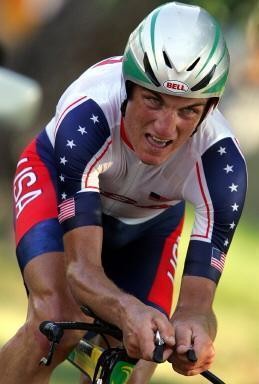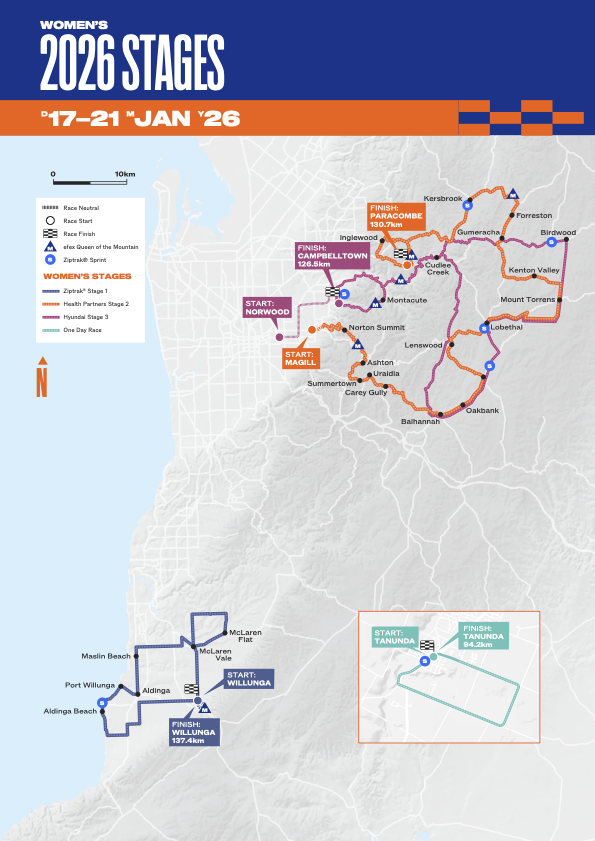Hamilton's defence: In his own words
Late Monday, April 18 the US Anti-Doping Agency handed down its decision in the Tyler Hamilton case....

Special news feature, April 19, 2005
Late Monday, April 18 the US Anti-Doping Agency handed down its decision in the Tyler Hamilton case. The majority of the three-man arbitration panel found that Hamilton had used banned homologous blood-doping methods in the Vuelta a Espana last year, and Hamilton now faces a two-year ban. Combined with the ProTour ethical code regulation that teams should not hire riders found guilty of doping offences for a further two years after their bans, that almost certainly means the end of Hamilton's career. Cyclingnews' Chief Online Editor Jeff Jones takes a look at the arguments Hamilton himself put forward in his defence.
Although Tyler Hamilton has been relatively quiet about his hearing up until now, his latest diary entry on his website, www.tylerhamilton.com, goes into some detail about the happenings of the last few months. He started by writing about the anomalous blood values measured by the UCI in the spring: Hamilton was warned several times by the UCI for having a high Stimulation Index (SI) or "off score", which is calculated from the rider's plasma haemoglobin and reticulocyte (immature red blood cells) levels.
The average SI score for professional cyclists is 90. At Liege-Bastogne-Liege last year, Hamilton scored 123.8. It was up to 132.9 the next week by the Tour de Romandie, and with it came a hematocrit level of 49.7% (the UCI's nominal limit is 50%) and a reticulocyte index of 0.22 (which is below normal limits).
"Health tests administered on my blood at Liege-Bastogne-Liege, the Tour of Romandie and Dauphine Libéré registered uncharacteristically low reticulocyte counts, which is the count of new red blood cells," Hamilton wrote. "Medical expert Jim Stray-Gundersen, who has conducted more than 10,000 blood tests on athletes participating in doping research programs, testified during my hearing that my reticulocyte counts from these three races were so low they 'are not to be believed'. Of the thousands he's evaluated in his career, he has only seen one test come up as low as mine - and it was an instance when he knew for a fact, the sample had been 'mishandled' during transport to the lab."
Hamilton went on to explain that at the Tour de Romandie, his Phonak team disputed their hematocrit readings from one of the UCI's morning health tests. "Riders who did both Liege and Romandie showed gains of an average of 4 points in a span of 4 days," wrote Hamilton. "In addition, the readings were also about 4-5 points higher than the team's own results taken the night before."
Hamilton said that because of his measured high hematocrit, he was tested for EPO after stage 2 of the Tour de Romandie, the result of which was negative. He complained that the UCI was measuring hematocrits inaccurately. "In 2004, multiple teams complained to the UCI about scores they felt were inaccurate. In fact, Dr. Zorzoli, of the UCI, testified to this fact in the Phonak/CAS hearing in January.
The latest race content, interviews, features, reviews and expert buying guides, direct to your inbox!
"My hematocrit score at Romandie was inaccurately high. I know this because I can compare it the UCI's own test from Liege (45.3), and the team's test taken just four days before. To give you and idea of how variable these numbers can be, the UCI test conducted on July 1st, the day before the Tour de France started, registered my hematocrit at 38. Again, my team complained, but this time about the score being too low. Inaccuracy of the readings can go both ways."
"If someone's hematocrit, haemoglobin or reticulocyte readings are incorrect, the "off score" will be incorrect. This is why the off score is not used to determine a doping offense. It is widely known that the measurements used to calculate the score are prone to some instability.
Phonak met with the UCI in early May to discuss the discrepancies. Hamilton was not present at the meeting. "The discussion boiled down to the fact that the Phonak team and UCI were using hematocrit machines manufactured by different companies. Phonak agreed to purchase the same machine the UCI uses so if a discrepancy was ever noted again, there would be a similar starting point at the basis of the argument. That machine was up and running for the team by the Tour de France."
"I also had a face to face meeting with Dr. Zorzoli in June to discuss my health test results. We spoke at length about my reticulocyte counts and what the medical explanations for those readings could be. He recommended a specialist for me to see in Boston to try and get to the bottom of the results. It was a friendly conversation, during which the topic of the new blood transfusion test was raised. Dr. Zorzoli noted that the test would be approved soon, but pointedly noted that I was fine to continue racing.
"I was also told that regardless of whether or not we agreed on the accuracy of my hematocrit reading at Romandie, that result put me in the out-of-competition testing pool for extra doping tests between races. I did receive one letter after our meeting confirming this. This news was not concerning to me because I already thought I was in this pool for having met other criteria - which were; being ranked in the top 50 in the world, and for having won an HC Stage race within the last year. In addition, I was already part of the USADA out-of-competition testing program and had been since the spring of 2000. So I didn't protest being included. In fact, I welcomed it."
Blood test issues
The next part of Hamilton's explanation details what transpired at his hearing, which took place between February 27 and March 2. With regard to the test for a homologous transfusion, Hamilton wrote, "Experts for both sides testified that flow cytometry, the test methodology used for this test, can not prove a blood transfusion has taken place."
"If the minimum threshold stated in the sole peer review for the test were applied to my test results from the Olympic Games and the Vuelta España, both tests would have been declared negative.
"There was no false positive study conducted during the validation of this test.
"The 'visual criteria' used to determined the results of this test boils down to an 'I know it when I see it' evaluation - which when applied in other doping tests, has been considered an unacceptable level of detection that cannot stand alone in determining someone has tested positive. Arbitration panels have stated in previous cases that quantifiable criteria must confirm 'visual' criteria. In my case there was no quantifiable criteria used."
With regard to his results, Hamilton raised the question of his inconclusive Olympic sample: "The fact the my Olympic A sample was originally declared negative and there was no B sample test result to substantiate changing it to positive."
Also, he wrote, "The antigens declared positive for 'mixed populations' in Athens and the Vuelta are not the same.
On the subject of his ex-Phonak teammate Santi Perez, Hamilton said, "When Santi was declared guilty on the day my hearing started - it took two key arguments off the table in my defense. We could no longer contend my case was the first blood transfusion case. Nor could we state that the test had not yet been validated through a judicial process."
Phonak's extortionist
Tyler Hamilton and Phonak's case was given a new twist when in August, 2004, an extortionist threatened the team "with inside knowledge about Santi and I being positive before either of us were declared so."
"On August 25, the extortionist sent his first message stating he knew I would be announced as 'positive' at the Olympics. According to the IOC, that conclusion was not made until between September 10 and 16.
"Out of all the Olympic athletes in Athens, and professional cyclists competing in 2004, the extortionist correctly 'guessed' that Santi and I would test positive
"The extortionist accepted a monetary bribe 'to keep an additional rider clean' and 'the Phonak team clean in 2005' on November 3, 2004. At that time he stated he needed 9 days to determine if everything would be okay. He was arrested by police after accepting the bribe. Nine days later, the Pro Tour teams were announced and Phonak was told for the first time, they would be left off the list."
No risks
Finally, Hamilton raised the rhetorical question of why he would dope when he had so much at stake. In addition to his two year contract with Phonak, "I had ten individual sponsors, a foundation, a touring company and a film project on my plate. My life had never been more secure. This was not a time to risk everything. And I never would have."
"In addition, the allegations made during my hearing were that I transfused once in the winter and again in early June. This simply doesn't make any sense. A transfusion in January or February would be pointless since I did not start racing until March. In addition, a wintertime transfusion would not result in low reticulocyte or high hematocrit counts in late April or early May.
"The spring is an important racing period, but it's not a time when I have any pressure on me to perform. I was happy to win the Tour of Romandie in May, but my goal for the season was seeing how well I could do at the Tour de France.
"In June, I finished second at the Dauphine Libéré but never once attacked during the race. No one with objectives for the Tour wants to be flying a month ahead of schedule. Winning the Dauphine was not important to me or my team. Getting to the Tour healthy and ready to go was. So there's no logic in the argument that I could have taken a transfusion in early June.
"And finally, I would never risk my health or my wife's health for the sake of racing. That just goes without saying.
Hamilton promised to share more details of his case in the coming days.
Also see: The Hamilton decision: Is he guilty and is the science perfect?

